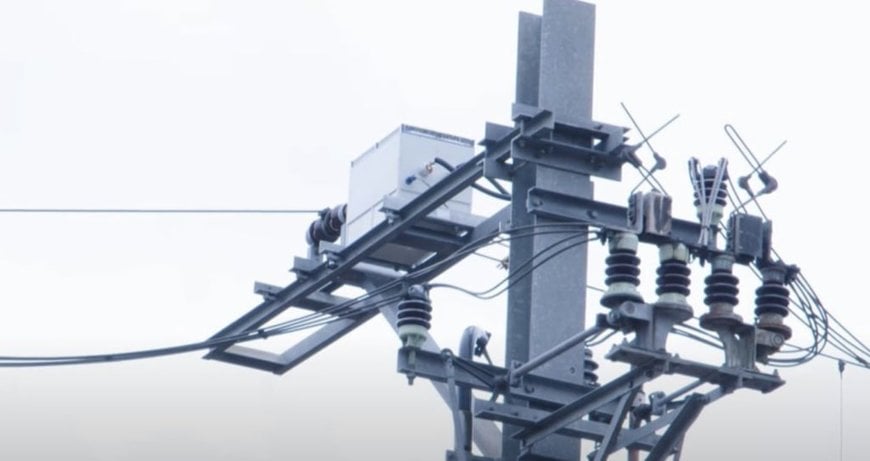railway-international.com
01
'24
Written on Modified on
Work faster and safer with the remote-controlled isolator
The video below shows you how much work it takes to test whether there is voltage on the overhead line and how to short-circuit it.

This job is not very pleasant and can be quite dirty plus resource intensive. Strukton Rail Nederland felt that there was an alternative way to perform this task especially for their long-term projects. Working in collaboration with Strukton Rail Nederland, Dual Inventive, Railtech, Core-Vision and Railcenter a solution was offered with the invention of a remote-controlled short-circuiting device for the overhead line.
Jorn Sprangers, Business Development Manager, from Dual Inventive says: “We now have a prototype of the remote-controlled isolator. We’re inviting the railway world to come and view the device at Railcenter in Amersfoort, the Netherlands, where people will be able to test and evaluate it. This will help us to develop a final concept so that we can bring the product to market by the end of the year. We believe that with this remote-controlled isolator is a workplace safety device that will be welcomed by the railway industry.”
The prototype installed at Railcenter is the RCI 3000 (remote-controlled isolator) which is the first variant of the innovative concept of a remotely operated short-circuit device for the overhead line.
A safe system of work must be in place before work can commence and this is the responsibility of the contractor. As part of this, there are a number of protections that need to be in place to ensure that the overhead line is de-energised and that it stays that way, even in the event that it is mistakenly re-energised in some way.
To prevent this from happening, the system is earthed (a connection is made between the overhead line and the traction return rail), and this means that any stray voltage will be redirected away from the workers. The fitting of these is pre-planned by a competent person. Complex works can sometimes require more than 10 short-circuit connections that need to be fitted.
The disadvantages of the existing local worksite earths
“The current working method has a substantial number of disadvantages and risks,” says Eddy Emck, Project Manager and Senior Technical Specialist, Strukton Rail Catenary Europe. “The local worksite earths currently used primarily consists of one cable with two connections. One connection is hooked to the overhead line using a grounding rod and the other is screwed to the track. This local worksite earth should be fitted and removed before and after each line block / possession.
The local worksite earth is sensitive to external influences leading to damage for example machines can regularly break local worksite earths. This is also a fundamental safety risk because as soon as the protection fails and if it’s not detected or reported, then people are at risk of being electrified. Installing a local worksite earth is repetitive, heavy and dirty and is time consuming. It is also a dangerous job as many kilometres are travelled along the track, often in the dark. There is the possibility that the local worksite earth is inserted into the wrong group that is still under tension. In addition to this, the local worksite earth is prone to theft.”
Remotely operated short-circuit device
With this in mind Emck felt that something else needed to be found to do the job more effectively and safely. “In doing so, I thought a semi-permanent local worksite earth that can be remotely controlled and monitored would be the solution,” says Emck. “Especially at worksites where local worksite earths have to be applied several times at the same locations. Using this approach would be a huge improvement in terms of safety and working conditions. The semi-permanent remote-controlled isolator could then be installed in the first line blockage / possession of a series of line blockages / possessions at all suitable and / or desired locations and only removed after the last line blockage / possession. Of course, the remote-controlled isolator could also remain installed for the purpose of regular maintenance operations. Only when installing the remote-controlled isolator the ’conventional’ local worksite earth would then have to be used – that was the idea.”
Highest safety for track workers
Emck brought together a number of parties to share his vision, together with Railtech, Railcenter, Core-Vision and Dual Inventive, the RCI 3000 was developed. This RCI 3000 is a semi-permanent short-circuit connection with a high voltage switch in between, that can be controlled and monitored via the cloud and with a mobile phone.
The device meets all Emck’s requirements. It will be able to switch safely (SIL 4); it’s suitable for temporary and (semi-)permanent installation; it can be remotely operated via the MTinfo 3000 cloud via the web and mobile app; it can be manually switched on location by means of a secure key switch and its correct operation is constantly monitored (de-energised, short-circuit detection, connections, battery status). Everything monitored is visible to the user through the cloud and physically via a lamp on the installation. In the case of any abnormalities the user is alerted.
Time and cost savings
Sprangers is pleased with the results achieved and says: “With the RCI 3000, significant time can be saved which in turn will provide cost savings for the user. It gives more net working time, which ultimately results in shorter line blockages / possessions as well as additional capacity on the existing rail infrastructure. This will be well received by ProRail and the transport operators. It is also necessary to achieve European rail transport targets. All of which is significant, but it’s more important that with the deployment of the RCI 3000 as remote-controlled isolator the highest safety for track workers is guaranteed.”
www.dualinventive.com

